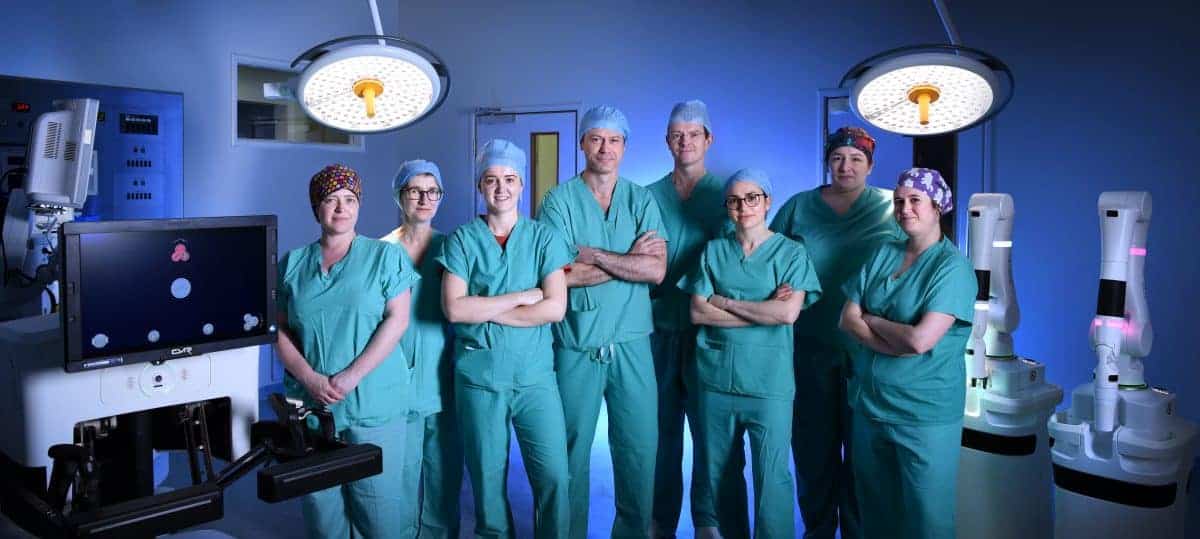
Surgeons in Scotland are the first in Europe to use a pioneering robot which is controlled similarly to a games console.
The Versius robot, which mimics a human arm, works like a computer games console and is capable of moving and rotating its “wrists” to aid keyhole surgery.
Instead of standing at the side of a patient during a traditional open procedure, the surgeon sits at a console and uses two “joystick” hand controls to manoeuvre the robotic arms to perform the delicate keyhole surgery.
Since November, around 30 patients in the colorectal unit at the Western General Hospital in Edinburgh, have undergone procedures using the robot.
Results have shown it reduces recovery time, and some patients have returned home within three days.
Consultant colorectal surgeon Doug Speake said: “This is the next revolution in surgical technology.
“We have gone from open surgery, to keyhole surgery, to robotic surgery.
“This is the future.
“It is a leap forward in surgical precision meaning patients recover faster and ultimately get home sooner.
“It is better for the patients and it is actually better for us.
“We were the first in Europe to use this technology.
“The robot puts the Western General Hospital and Edinburgh on the map as a centre for excellence and training.
“It cements our reputation as a progressive unit at the very forefront of technology, providing the highest quality, safe and effective patient care.”
Versius is made up of three or four independent arms, which replicate those of a human in size and shape.
Long procedures are made less strenuous as medics can use 3D visualisation and unique instrument controls that allow the surgeon to mimic their own human movement.
The robots, which each stand around four-feet tall, are positioned by the surgical team at the side of the patient as they are taken into the operating theatre.
Small incisions are made into the abdomen, and small “ports” are inserted.
The instruments held by the robotic arms are then slid into the ports and into the body.
The surgeon, who can see inside the body using images on a TV screen, then controls the instruments with the hand controls at an open console.
Professor Alastair Campbell, 81, was operated on by the robot in November and was home three days later.
He had the operation, in the Western General Hospital, after medical investigations identified a polyp, which could have been the signs of very early stages of colon cancer.
The great-grandfather went on to have a section of his colon removed and rejoined as part of a procedure carried out using the Versius robot.
Professor Campbell, a retired professor of medical ethics, said: “The process was fully explained to me and I was very happy to take part and give it a go.
“I’m glad I did. I watched a video which explained how it worked and the benefits.
“The scars were very small and they have all but faded already.
“There was a bit of post operative pain, of course, but it was controlled very quickly and effectively.
“I’m very lucky.
“I am quite fit and I wanted to be home as quickly as I could after the procedure so I was pleased that within three days, I was home.”
Related – Guinness World Record-breaking NHS nurse has achievement recognised